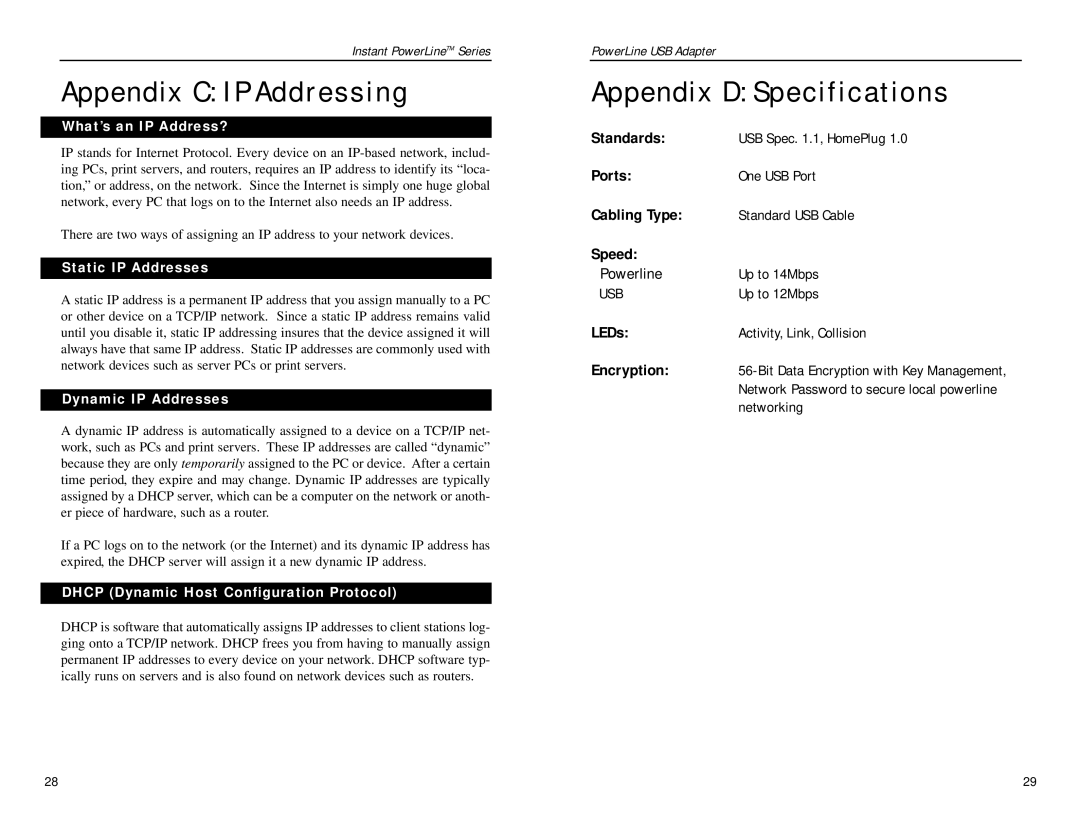
Instant PowerLineTM Series
Appendix C: I P Addressing
What’s an IP Address?
IP stands for Internet Protocol. Every device on an
There are two ways of assigning an IP address to your network devices.
Static IP Addresses
A static IP address is a permanent IP address that you assign manually to a PC or other device on a TCP/IP network. Since a static IP address remains valid until you disable it, static IP addressing insures that the device assigned it will always have that same IP address. Static IP addresses are commonly used with network devices such as server PCs or print servers.
Dynamic IP Addresses
A dynamic IP address is automatically assigned to a device on a TCP/IP net- work, such as PCs and print servers. These IP addresses are called “dynamic” because they are only temporarily assigned to the PC or device. After a certain time period, they expire and may change. Dynamic IP addresses are typically assigned by a DHCP server, which can be a computer on the network or anoth- er piece of hardware, such as a router.
If a PC logs on to the network (or the Internet) and its dynamic IP address has expired, the DHCP server will assign it a new dynamic IP address.
DHCP (Dynamic Host Configuration Protocol)
DHCP is software that automatically assigns IP addresses to client stations log- ging onto a TCP/IP network. DHCP frees you from having to manually assign permanent IP addresses to every device on your network. DHCP software typ- ically runs on servers and is also found on network devices such as routers.
PowerLine USB Adapter
Appendix D: Specifications
Standards: | USB Spec. 1.1, HomePlug 1.0 |
Ports: | One USB Port |
Cabling Type: | Standard USB Cable |
Speed: |
|
Powerline | Up to 14Mbps |
USB | Up to 12Mbps |
LEDs: | Activity, Link, Collision |
Encryption: | |
| Network Password to secure local powerline |
| networking |
28 | 29 |
